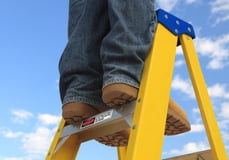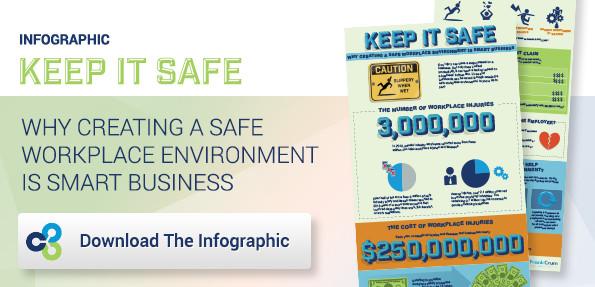 Workplace safety is one of the biggest roadblocks to success for many business owners. The most recent reporting from the U.S. Department of Labor’s Bureau of Labor Statistics shows about 2.9 million injuries and illnesses reported by private industry employers in 2015. That’s in addition to more than 750,000 injuries and illnesses reported in the public sector. In 2015, the number of deadly work-related injuries was more than 4,800.
Workplace safety is one of the biggest roadblocks to success for many business owners. The most recent reporting from the U.S. Department of Labor’s Bureau of Labor Statistics shows about 2.9 million injuries and illnesses reported by private industry employers in 2015. That’s in addition to more than 750,000 injuries and illnesses reported in the public sector. In 2015, the number of deadly work-related injuries was more than 4,800.
Worker safety should be just as important to the employer as it is to the workers themselves. After all, a workers’ comp claim can still cost a business owner a ton. In addition to the up-front fees, such as premiums and deductibles, there are follow-up costs. Employers never want a worker to be hurt, but there’s more to creating a safety culture than simply preventing injuries. Here are some suggestions:
- Require top-level staff to assume responsibility for safety
- Provide safety training
- Offer ongoing safety classes and workshops
Being proactive before an accident occurs is the key to improving safety performance, and sustaining it over time. For that reason, March is National ladder-safety month. The goal is to make business owners aware of the risks, as well as the preventative measures, to hopefully reduce the amount of injuries and deaths in the workplace or on the job site. Let’s use ladder safety as a way to explain the process of creating a safe workplace.
It doesn’t matter whether your employees are using a step stool or a 12-foot ladder, every step matters! Every year, more than 300 people are killed in ladder-related accidents. It’s the worker’s responsibility to use the ladders responsibly, but it’s the employer’s responsibility to make sure his or her teams are educated (PDF) and practicing safe climbing. Make sure your employees:
- Wear sturdy footwear with clean soles
- Inspect the ladder ahead of time for damage or bending
- Read the safety information labels to ensure the ladder has the right:
- Style (step, extension, platform, multi-ladder, tripod)
- Height (Extension ladders should be 7 to 10 feet longer than the highest support or contact point)
- Duty Rating (ladders are designed to hold up a specific amount of weight)
- Material (wood, aluminum, fiberglass, steel)
- Place the ladder on the ground, on a level surface
- Make sure ladders are angled correctly
Once on the ladder, you want to make sure your employees step on and off carefully, especially at the top. Teach them to maintain three-point contact – one hand and two feet, or two hands and one foot – when climbing any ladder and when working from a straight or extension ladder. Employees should climb slowly and deliberately and avoid sudden movements. Other recommendations for workers include:
- Use a tool belt, backpack, hoist, lift, or ropes to carry tools and equipment, so your hands are free to grip the ladder
- Keep your body centered between the side rails
- Do not overreach or lean to the side
- Work with both feet on the same rung or step
- Do not walk or shift your ladder while standing on it
When an accident occurs, everyone suffers. Even when the claim is covered by workers’ comp insurance, it can cause future premiums to rise. Here at FrankCrum, we provide knowledgeable people, tools and resources to help our clients prevent workplace accidents. We can help with on-site reviews, technical resources and safety management programs. Developing an active, specific program that you can weave into your operational culture is the best way to create and maintain a safe workplace.





